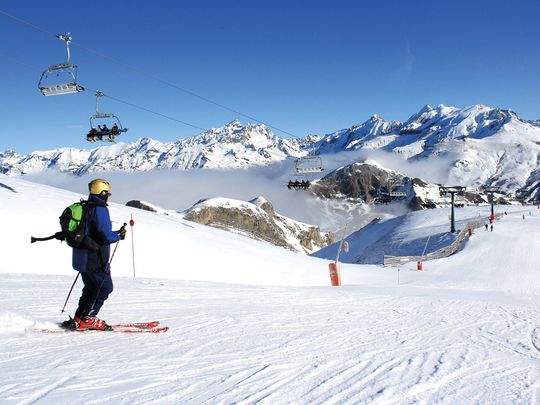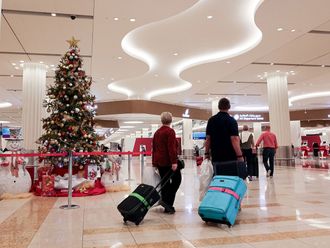
For one thing, Spain allows you to enjoy everything you love about winter, but it’s usually sunny, with milder temperatures than most of Europe and not much rain. In many places cold weather means snow and winter sports, and everywhere there are traditional seasonal dishes to warm you up. And if you would really rather skip winter and go straight to spring, you can visit the Canary Islands to enjoy a perpetual gentle 24 degrees centigrade and spend some pleasant days on the beach.
This season is also full of traditions that you will love: from the fun carnivals to Christmas and Easter Week, often held between winter and spring. Here are some amazing travel options that present all this and more through curated offerings that could be just right for you.
Adventures in Tena Valley
Across more than 400 square kilometres and 16 villages, in the province of Huesca (Aragon), the Tena Valley offers a myriad of activities for all ages. The natural beauty of the Aragonese Pyrenees is the common denominator.
If scaling peaks translates to adventure, be sure to visit Hoz de Jaca. There, you will find the longest and highest double zip line in Europe. It is one kilometre long, more than 1,200 metres high and reaches a speed of 90 kilometres per hour. And remember that this is a double zip line, so you can experience the adventure with a friend! Another alternative to enjoy in a group, and especially with children, is the Biescas zip line park, with nine circuits of different levels of difficulty and more than 80 games to test your balance.
One of the most exclusive plans in the area consists of sleeping in the snow in a bivouac, tent or in an igloo built with your own hands. The excursions organised from Piedrafita de Jaca include 4x4 snowmobile routes (both in the day and at night, under the light of the moon and stars), snowshoeing, and meals based on local products.
Still in Piedrafita de Jaca, you can watch up close the life of the native fauna by touring a wonderful forest. The Lacuniacha Faunistic Park brings together around 15 species of animals in a state of semi-freedom, has a picnic area and a privileged location for fantastic panoramic views of the Tena Valley.
If you want to add a 3,000-metre climb to your list of challenges, here you will find all the facilities to do it without needing extensive experience in high mountains. Specialised companies have proposals such as the trekking route of the Garmo Negro peak, which is 3,064 metres high.
This is a two-stage circular route with an expert guide and everything included: an afternoon for preparing, two days walking, two nights in a mountain shelter with breakfast, lunch and dinner and the option of adding a last night at the Balneario de Panticosa spa, with a thermal circuit to recover.
Since it is one of the main destinations for skiing in Spain, with its famous Aramón Formigal-Panticosa ski resort, the Tena Valley has a wide offer of accommodation of all types and varied restaurants to savour the best of Aragon’s gastronomy.
Urban tourism in Spain is magical
The calendar of big cities like Madrid, Barcelona, Bilbao, Valencia, Seville and Malaga overflow with options. Escape to one or more of them this winter, and as well as sightseeing you’ll find infinite possibilities for entertainment, such as a musical at one of the theatres on Madrid’s Gran Vía, or a winter visit to the panaromic Royal Palace of La Granja, an hour’s drive from Madrid, a Barça football match in Barcelona, the latest exhibition at the Guggenheim Museum in Bilbao, an opera at the Palau des Arts in Valencia, a flamenco show at a tablao in Seville, or rediscover the works of Picasso in his birthplace of Malaga with temporary exhibitions at the Picasso Museum. All these cities have international airports, and most of them have high-speed train connections.
Fly to the Canary Islands
These islands off the south-eastern cost of the Iberian Peninsula (less than three hours by plane from Madrid) boast what many describe as one of the best climates in the world. The average temperature is around 24 degrees centigrade, so even in winter most people wear summer clothes. Thanks to the mild climate, winter is as good a time as any to explore the landscapes of their four National Parks or to have special experiences like seeing out the year with a swim and sunbathing on 31 December on one of their beautiful beaches.
A romantic trip, perhaps?
Why not? St. Valentine’s Day comes around on February 14 and can be an excellent excuse to gift someone a romantic getaway in Spain. What experiences are especially romantic? It depends on what you like, but there are always safe bets, such as a ride in a horse-drawn carriage around the old quarter in Seville, seeing the sun set over the Alhambra in Granada dusted with snow, a night-time stroll by the Royal Palace in Madrid, spending the night in a castle or palace (many Parador Hotels are restored heritage buildings) or curling up by the fire in a country guesthouse or a cosy little hotel in an enchanting village, such as Aínsa, Albarracín, Ronda, etc. There are hundreds of them!
Experience a Spanish Christmas
From the end of November, you can already experience the Christmas atmosphere in Spain. The streets are adorned with lots of lights and decorated Christmas trees, and the squares in many cities host fairs and ice-skating rinks, and markets selling all types of traditional foods and crafts.
If you decide to spend Christmas here, you can have some truly Spanish experiences: seeing enormous nativity scenes, running the famous San Silvestre Vallecana race, eating 12 grapes during the 12 strokes of midnight on December 31 to see out the year (we call New Year’s Eve Nochevieja), receiving gifts from the Three Kings on January 6... and why do we call it “sweet Christmas”. Because sweet treats, such as turrón, polvorones and marzipan, are an essential part of the festivities.
Indulge in retail therapy
If you enjoy shopping, take note: the main sales period in Spain takes place in winter. They normally begin on January 7, although certain cities like Madrid bring them forward, to as early as January 1. Depending on the region of Spain that hosts these events, they may go on longer and even last until the end of March.
Savour dishes that are one of a kind
Going to Spain in winter and not having churros with hot chocolate would be a mistake... and the numbers of charming cafés where you can enjoy them are increasing all the time. While we are on the subject of eating, winter in Spain is synonymous with roast chestnuts and hearty, delicious dishes: cocido madrileño (a traditional stew from Madrid), caldo gallego (a Galician broth made with processed meat and turnip greens), escudella catalana (a typical Catalan chicken-based broth with galets, a type of pasta) and more.
There are even several festivals devoted to specific products, such as the Festival de la Exaltación del Botillo, in the town of Bembibre in Leon, which celebrates botillo, a local cured meat speciality. As we say in Spain, qué aproveche (enjoy)!
For more information on tourism options in Spain visit http://www.spain.info









